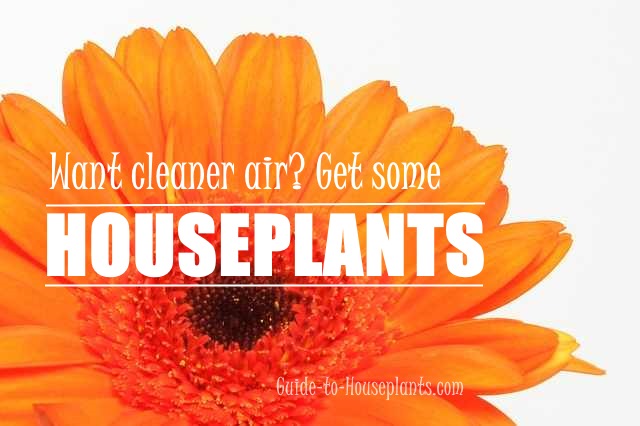Table Of Content

It also loves the humidity, so it will do well in the kitchen or bathroom. If you want to keep it elsewhere, you might want to set it up next to a small humidifier. It's also relatively easy to maintain and particularly forgiving of forgetful waterers. With increasing evidence that air purifying plants can clean the air in our homes and have a positive effect on our mental wellbeing, there's never been a better time to invest in one. Another wonderful indoor plant that will clean the air is Anthurium.
Snake plant
Sure, houseplants are great. But they're not actually cleaning the air - CNN
Sure, houseplants are great. But they're not actually cleaning the air.
Posted: Tue, 12 Nov 2019 08:00:00 GMT [source]
The Marginata variety, or red-edged dracaena, is one of the best, removing up to 80% of this toxin from the air. Janet Craig, a green dracaena, removes 77.6% of benzene, and Warneckei, the striped dracaena, works well against benzene and formaldehyde, removing half of both toxins from the air. Place it in a spot where it gets bright, indirect light, and keep the soil consistently moist.

Air-Purifying Plants to Cleanse Your Space
It does best in bright, indirect sunlight and it's the perfect size for a window sill, end table or plant stand. Also known as Pilea Peperomioides, the low-maintenance plant is a popular Feng Shui plant as it's widely known to bring luck and positivity. This easy-to-grow fern prefers bright, indirect light, but can survive in the direct sun if the soil is kept moist.
Dracaenas
It removed up to micrograms of formaldehyde over 24 hours. There would be no point putting in a fantastic air cleaning houseplant if no one had ever heard of it, or more importantly, actually wanted to have it in their homes. So rewind back to the 80s and early 90s and you can understand why the casual indoor gardener and health conscious were very interested in the topic. The fact something as simple as a houseplant could help remove harmful chemicals caught on and the NASA study quickly spread and is still cited and talked about today. If you're like me and enjoy the challenge of growing houseplants and getting them to thrive, then Ourhouseplants can help. This website shares my knowledge and years of growing plants and provides (hopefully) helpful advice on properly caring for your indoor plant friends.
Winter Care for Houseplants

Its roots grow upwards and often form interesting shapes around the stems. You may want to reconsider “air-purifying” plants if you have pets such as cats and dogs. Ask the staff at your local greenhouse about pet-safe and allergy-safe options. You can also look up which plants are toxic to animals on the ASPCA Toxic and Non-Toxic Plants page.
The tree is a slow grower, making it suitable for planting indoors in pots. With just occasional watering in pots with drainage holes, it can grow steadily without the need to prune too often. However, I like the plant because of its relatively small size. It is better for small spaces than most indoor low-light trees, and can fit in most apartments.
How many plants do you need to purify indoor air?
I find bamboo palms suitable for small apartments that need refreshing and toxin elimination without the need for commercial air purifiers. Bamboo palms reach a height of 4 to 12 feet indoors but can be trimmed back often to ensure they don’t outgrow your indoor space. The snake plant can also remove CO, benzene, and toluene when grown indoors. The chlorophytum elatum variety of spider plant that was tested had a total leaf surface area of 2471 cm2.
Best indoor plants to purify air in your living room - Moneycontrol
Best indoor plants to purify air in your living room.
Posted: Sat, 30 Mar 2024 07:00:00 GMT [source]
Best Air-Purifying Plants to Infuse Greenery Into the Home
If you don’t want to wait, you might want to just get a new pot. The reading I’ve done suggests that you need one plant for every 100 square feet. So, you wouldn’t need to turn your home into a jungle, but you’d probably need two or three plants in medium and large rooms.
Bamboo Palm
"Generally good all-rounders and relatively easy-to-grow plants include peace lilies, zamioculcas zamiifolia and devil’s ivy, to name a few". A staple plant in homes and offices, ficus trees are great at toxin removal. During NASA’s tests, these trees cleaned up 47.4% of the airborne formaldehyde they were exposed to along with 30% of the benzene and 10.5% of trichloroethylene.
Hailing from east Asia, the money plant is easy to grow and propagate, making it great for those who are new to houseplants. Its round, flat leaves can grow up to 15cm and it's also known as the UFO plant or pancake plant. They can also remove pollutants from car exhausts entering the home. It turns out that the dracaena family is really good at air purification – particularly when it comes to benzene.
Many chemicals are used as ingredients in products in our homes. Flooring material, electronics, and many other products emit toxic volatile organic compounds (VOCs) that pollute your indoor air. Air-purifying plants can help clean indoor air and remove toxins, smoke, and odors from your living areas, bathrooms, and bedrooms. Make sure you grow them properly.House plants need the right conditions to perform correctly. For example, some will need full sun instead of indirect light. Maybe constantly moist soil, or a bit of drying out between waterings.Getting the care needs down, might sound overwhelming, but all you need to do is check out my plant profiles page.

No comments:
Post a Comment